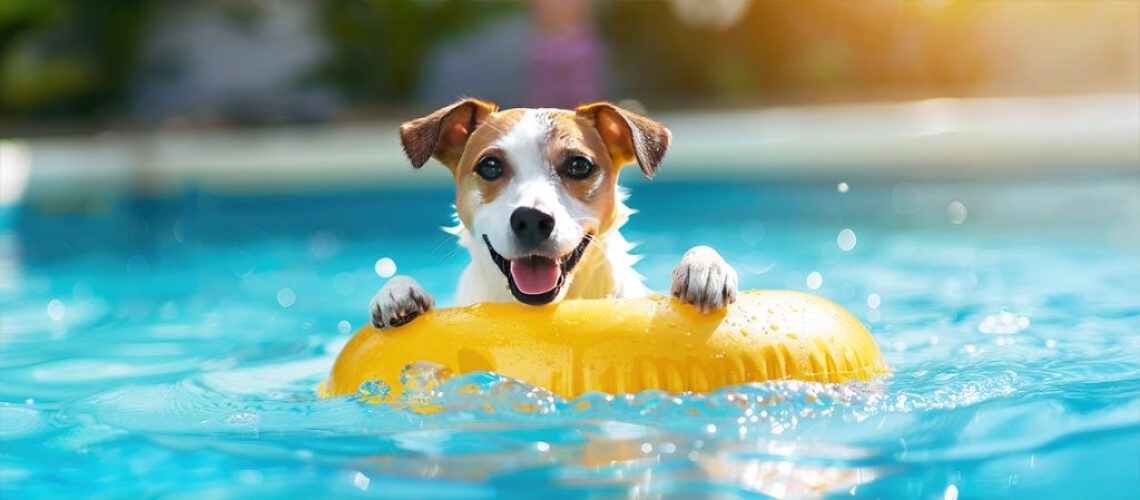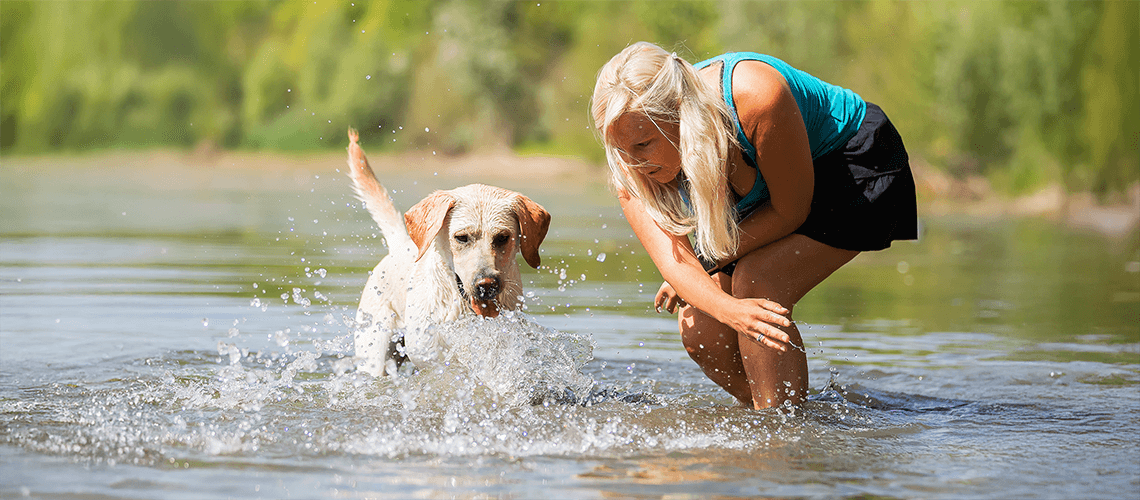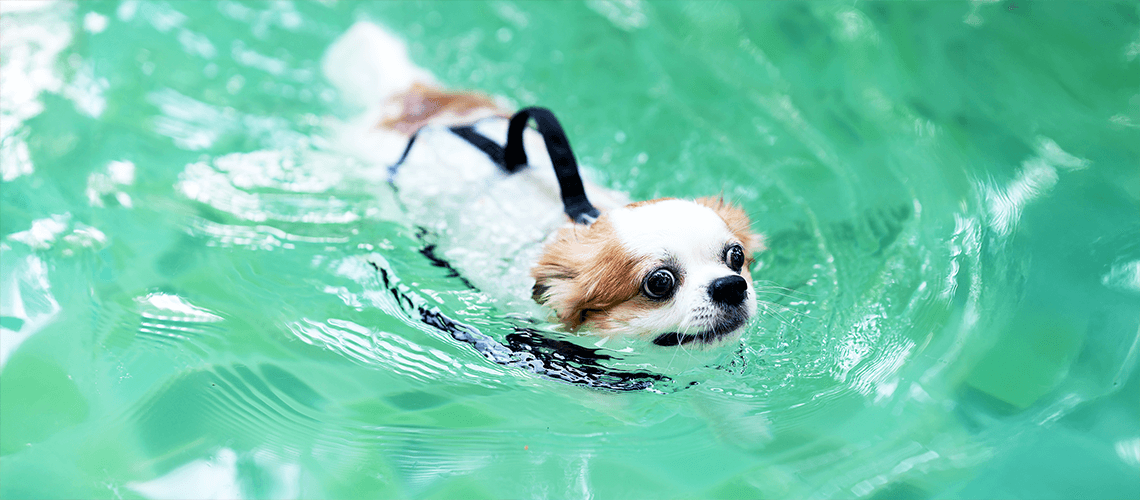Summer is the perfect time to get outside, enjoy nature, and spend quality time with your dog. Whether you’re near a swimming pool, a peaceful pond, or a busy lake, water activities can be fun for your dog. However, just like humans, dogs face certain risks when it comes to water. It’s crucial to prioritize your dog’s safety when they’re near any bodies of water. By following a few simple tips, you can ensure that your dog stays safe and has a blast splashing around.
Safely Introducing Your Dog to Water
Before diving into any water activities, it’s essential to introduce your dog to water gradually. Not all dogs are natural swimmers, and some may feel anxious around water, especially if it’s their first time. Start by letting them explore shallow water, such as the edge of a pool or a calm area in a pond or lake. If your dog is small, has short legs, or seems hesitant, consider using a life jacket to give them extra support and build their confidence in the water. This extra step can make them feel secure and help them enjoy the experience.
For added safety and ease, provide your dog with steps or a ramp to enter and exit the pool. This helps your dog become familiar with the pool’s boundaries and prevents accidental slips or falls. It’s especially important for dogs who might struggle with climbing out of the water. Make sure to practice exiting the pool with them multiple times so they’re comfortable.
Thinking about an Emotional Support Animal? Learn how your pet can provide comfort and companionship in your life.
Pool Safety for Dogs
Swimming pools can be a wonderful place for dogs to cool off, but they also come with inherent risks. Even strong swimmers can find themselves in tricky situations, so water safety should always be a top priority. Supervision is key whenever your dog is near a swimming pool, as accidents can happen in the blink of an eye. A pool cover is a must when the pool isn’t in use. This helps prevent your dog from accidentally falling into the water when you’re not around.
Another important aspect of pool safety is ensuring your dog knows how to find the pool’s exit. Make sure your pool has steps or a ramp that your dog can easily use to climb out of the water. You can teach them to use this exit and practice it frequently. This could make a big difference in case of an emergency.
Don’t forget to check the water temperature before allowing your dog to swim. Water that’s too cold can shock their system, while hot water can lead to overheating, particularly in breeds that are more prone to heat sensitivity. For breeds with short legs or dogs that are less buoyant, a life jacket can provide additional peace of mind and make water activities safer and more enjoyable.
Beach Safety for Dogs
Beaches are an exciting place for dogs to explore and run free, but they also pose unique challenges. The ocean’s strong currents, waves, and tides can be overwhelming for even the most seasoned canine swimmers. Always keep a close eye on your dog when they’re near the water, and make sure they are comfortable with swimming before allowing them to venture into deeper areas.
Additionally, it’s important to watch out for blue-green algae, which can sometimes appear along shorelines, ponds, and lakes. This harmful algae can be dangerous or even fatal if your dog ingests it. Always check the water quality before allowing your dog to swim and avoid areas where algae is visible.
Another common hazard at the beach is discarded fishing gear, including fishing hooks and lines, which can easily injure your dog. Keep them away from areas where fishing may have occurred, and always inspect the beach for these potential dangers before letting your dog roam freely.
Want to strengthen your bond with your pet? Find out how they can become your Emotional Support Animal.
Lake and River Safety for Dogs
Lakes and rivers provide a natural environment for water play, but they come with their own set of risks. Always check the water temperature before letting your dog take a dip. Cold water can lead to hypothermia, while warm water might contain harmful bacteria that can cause infections or other illnesses.
Be especially cautious of blue-green algae in freshwater environments, such as lakes or rivers. This toxic algae can be deadly if your dog drinks or swims in contaminated water, so it’s important to stay informed about the water quality and avoid areas with visible algae blooms.
In addition to algae, fast currents or slippery banks can make it more challenging for your dog to navigate safely. Always ensure there’s a clear way for your dog to exit the water, especially in natural settings where water depth can change quickly. Installing or using steps or a ramp at the water’s edge can make it much easier for your dog to get in and out safely. Also, be cautious of fishing gear in these areas, which can cause injuries if not properly cleaned up.
General Water Safety Tips for Dogs
No matter where your water adventures take you, here are some general safety tips to keep in mind for your dog:
- Always supervise: Never leave your dog unattended near water, whether it’s a swimming pool, pond, or lake.
- Use a life jacket: For dogs that aren’t confident swimmers or are new to water activities, a life jacket adds a layer of protection.
- Fresh water access: Make sure your dog has access to clean fresh water to drink. Drinking from bodies of water like lakes, ponds, or the ocean can expose them to harmful bacteria or toxins.
- Regular breaks: Spending long periods of time in the water can tire your dog out quickly, so make sure to take regular breaks for rest and hydration.
- Avoid dangerous waters: If you notice strong currents, murky water, or visible signs of blue-green algae, it’s best to avoid letting your dog swim in those areas.
Ready to take your relationship with your pet to the next level? Learn how they can become your certified Emotional Support Animal.
Conclusion
Water activities are a fantastic way to bond with your dog, keep them active, and help them cool off during warm weather. By following these water safety tips, you can ensure your dog stays safe and enjoys their time swimming in the pool, playing by the pond, or exploring a lake or river. Remember to always supervise, use appropriate gear like life jackets, and be mindful of hazards like fishing hooks or blue-green algae. With a little planning and care, you and your dog can have endless fun while staying safe around water.





